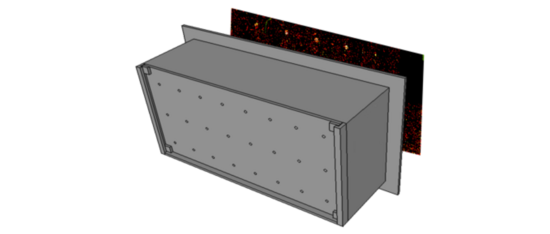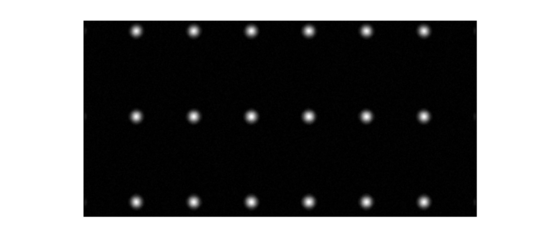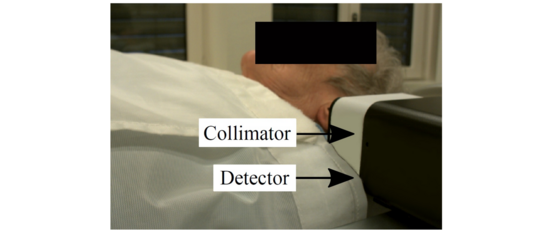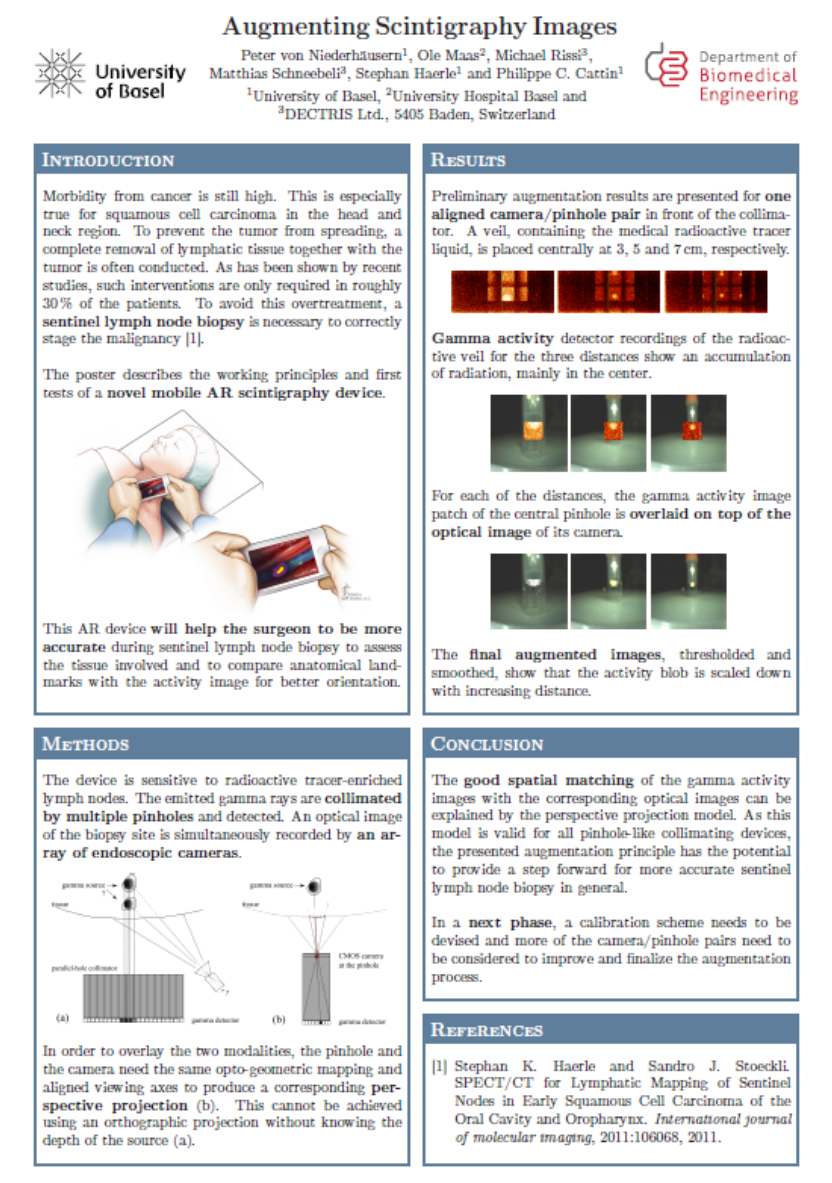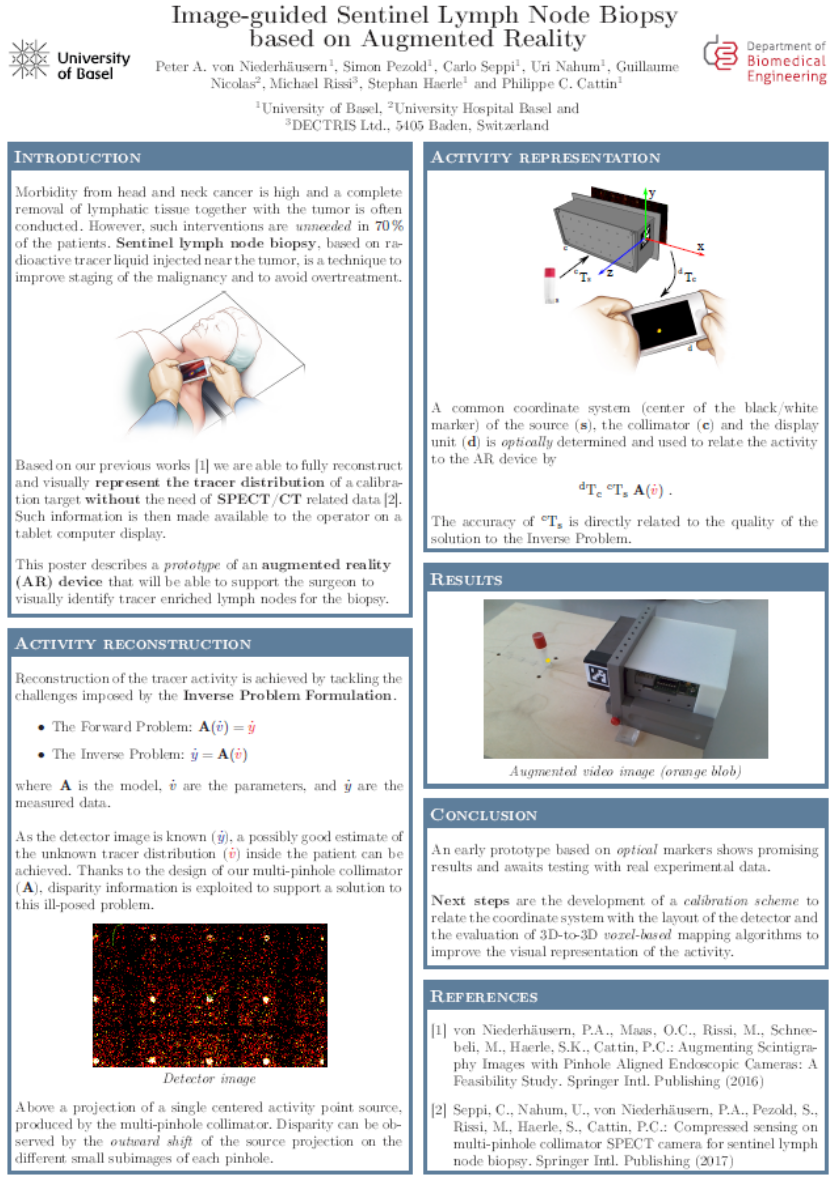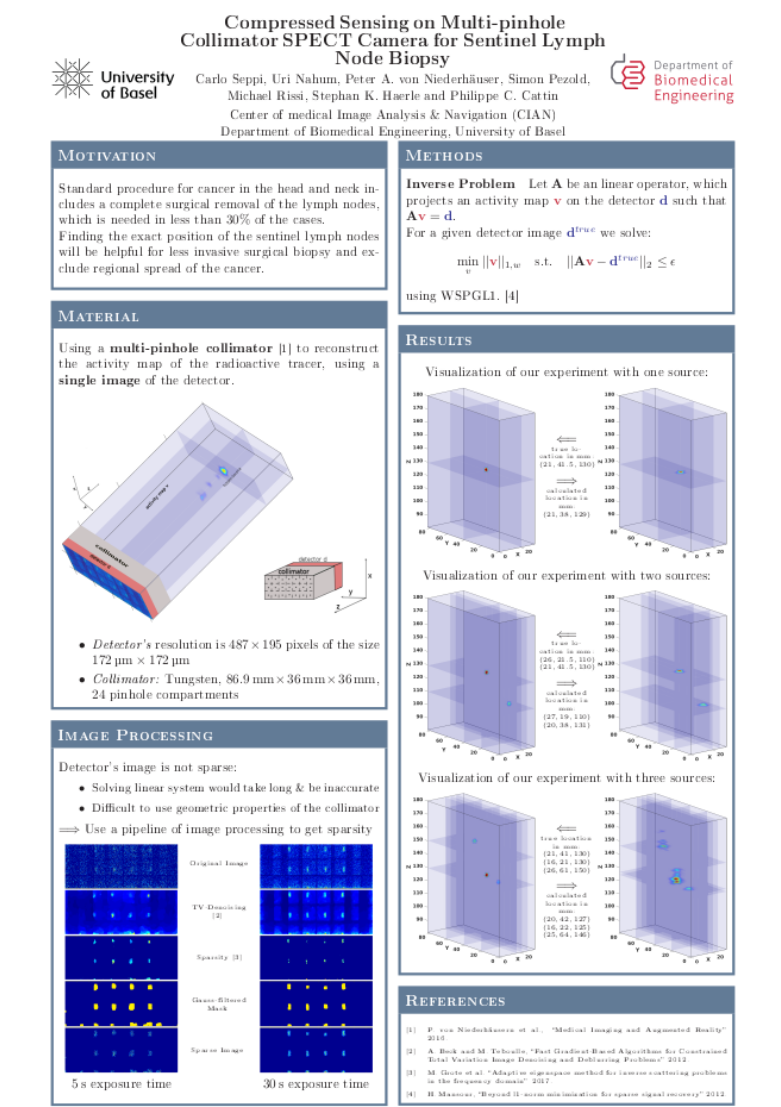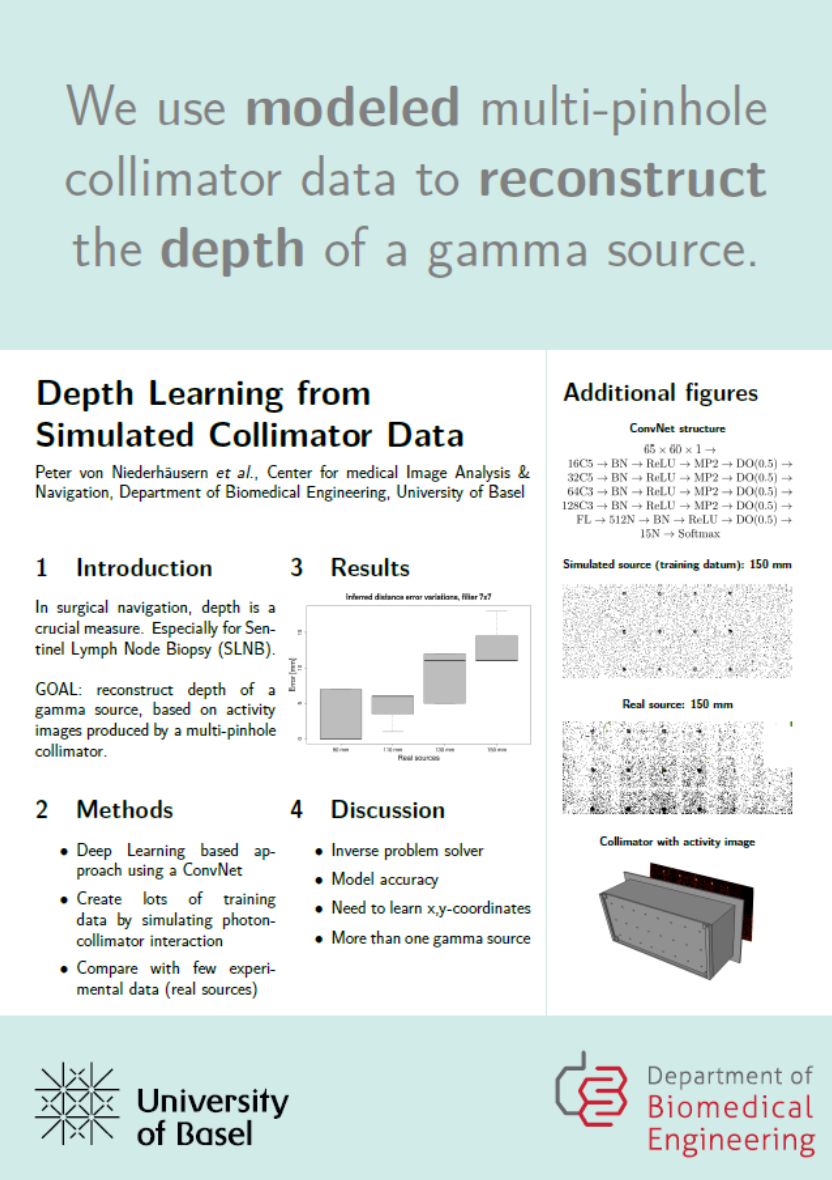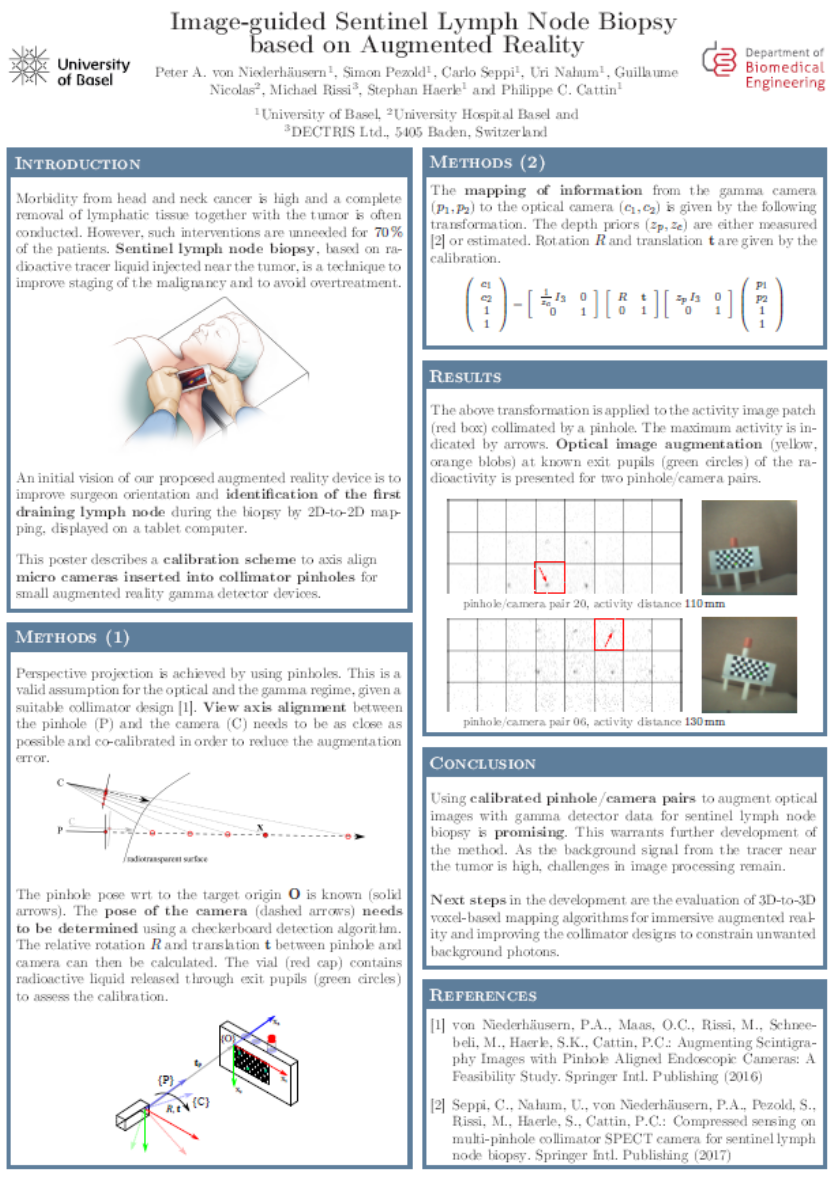Project MOONSTAR: a novel Augmented Reality System to support Sentinel Lymph Node Biopsy
In Nuclear Medicine Imaging, radioactive tracers are administered to cancer patients by injection. These gamma-ray tracers accumulate in important soft tissue structures, e.g. lymph nodes, to yield signals, detectable from the outside. The lymphatic system plays an important role in the immune defense mechanism of the human body. However, it is also amenable to spread cancerous cells from a primary tumor site. By identifying and analyzing sentinel lymph nodes downstream of the tumor, the progression of cancer can be monitored or staged and acted upon. One important staging procedure is called Sentinel Lymph Node Biopsy.
Project MOONSTAR (Mobile Optical Navigated SPECT Camera with Augmented Reality) focuses on a novel integrated Augmented Reality (AR) system for localizing Sentinel Lymph Nodes (SLN) for Sentinel Lymph Node Biopsy (SNB). The system comprises different devices and algorithms which provide a basis to improve SNB by visual means.The current surgical intervention technique uses a gamma probe that provides audio feedback to detect and discriminate tracer enriched SLNs from lymph tissue for further analysis. As the simultaneous handling of the probe and the cognitive mapping of the activity indication on the anatomy of the patient require a high level of attention, it is both challenging and difficult for the surgeon to navigate biopsy tools interactively. The risk of not detecting relevant lymph nodes for the subsequent biopsy limits SNB. This work proposes an alternative approach, based on state-of-the-art head-mounted AR goggles. A 3D projection of the reconstructed tracer distribution inside the SLNs is visually provided to the specialist, freeing their hands and allow for improved tool handling. The tracer distribution is gained from a stationary custom-built small form factor detector, in combination with multi-pinhole collimators (Figure 1). The reconstruction is achieved by 3D aware algorithms, operating on gamma activity images (Figure 2).The envisioned AR system has the potential to support SNB and to improve the procedure in general.
A more effective biopsy means better staging and therefore less risk of missing out on occult tumor cells; all for the benefit of the patient. Currently, patient studies are conducted to examine the viability of the method (Figure 3).This research project is generously supported by DECTRIS Ltd., Baden, Switzerland, by providing detector technology and technical assistance.
Project leader: Peter von Niederhäusern


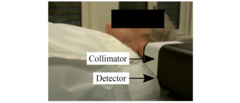
P.A von Niederhäusern, S. Pezold, U. Nahum, C. Seppi, G. Nicolas, M. Rissi, S.K. Haerle, P.C. Cattin. Augmenting camera images with gamma detector data A novel approach to support sentinel lymph node biopsy. EJNMMI Physics (2019). read
P.A. von Niederhäusern, C. Seppi, S. Pezold, G. Nicolas, S. Gkoumas, S.K. Haerle, P.C. Cattin. Gamma Source Location Learning from Synthetic Multi-pinhole Collimator Data. Machine Learning for Medical Image Reconstruction (MLMIR), 2019. Lecture Notes in Computer Science, vol. 11905, pp. 205–214. Springer International Publishing (2019). read
U. Nahum, C. Seppi, P.A. von Niederhäusern, S. Pezold, S.K. Haerle, P.C. Cattin. Sentinel lymph node fingerprinting. Physics in Medicine and Biology (2019). read
C. Seppi, U. Nahum,P.A. von Niederhäusern, S. Pezold, M. Rissi, S.K. Haerle, P.C. Cattin. Compressed Sensing on Multi-pinhole Collimator SPECT Camera for Sentinel Lymph Node Biopsy. Medical Image Computing and Computer-Assisted Intervention (MICCAI), 2017. Lecture Notes in Computer Science, vol. 10434, pp. 415-423. Springer International Publishing (2017). read
P.A. von Niederhäusern, O.C. Maas, M. Rissi, M. Schneebeli, S.K. Haerle, P.C. Cattin. Augmenting Scintigraphy Images with Pinhole Aligned Endoscopic Cameras: A Feasibility Study. Medical Imaging and Augmented Reality (MIAR), 2016. Lecture Notes in Computer Science, vol. 9805, pp. 175–185. Springer International Publishing (2016). read
No open projects currently

